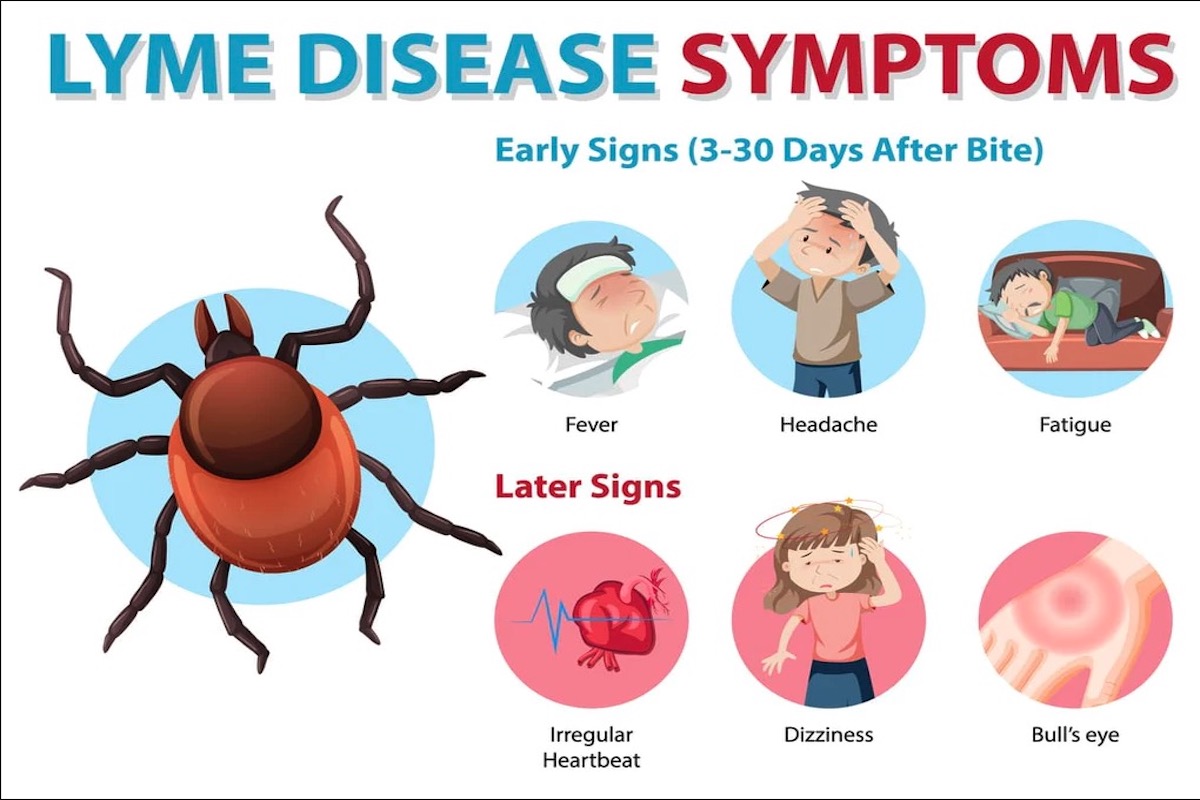Lyme disease is a common tick-borne illness in the United States, with over 300,000 cases reported annually. It is caused by a bacterium called Borrelia burgdorferi, which is transmitted to humans through the bite of infected ticks. The disease can affect various parts of the body, including the skin, joints, heart, and nervous system. Lyme disease can cause a range of symptoms, from mild to severe. Early diagnosis and treatment are essential to prevent complications.

What Is Lyme Disease?
Lyme disease is caused by Borrelia burgdorferi, a type of bacteria that is transmitted to humans through the bite of infected black-legged ticks. These ticks are commonly found in wooded and grassy areas, and they are most active during warm months. Importantly, Lyme disease is prevalent in the United States, particularly in the Northeast and Upper Midwest regions.
Causes & Types of Lyme Disease
Lyme disease is a tick-borne illness caused by a type of bacteria called Borrelia burgdorferi. The disease progresses through three stages: early localized, early disseminated, and late disseminated. In the early localized stage, the infection is confined to the site of the tick bite and may cause symptoms such as a rash, fever, and flu-like symptoms. As the disease progresses to the early disseminated stage. The bacteria spread throughout the body and may cause joint pain, fatigue, and neurological problems. Finally, in the late disseminated stage, the disease can cause severe neurological and cardiac complications.
Symptoms of Lyme Disease
Symptoms can vary depending on the stage of the infection. In the early localized stage, the most common symptom is a rash that appears at the tick bite site. The rash may be circular and have a bull’s eye appearance. Other symptoms may include fever, fatigue, headache, and muscle aches. In the early disseminated stage, the infection has spread to other parts of the body. Symptoms may include joint pain, neurological problems, and heart palpitations. The disease can cause severe neurological and cardiac complications in the late disseminated stage, including memory loss, difficulty concentrating, and heart block.
Lyme Disease Overview
This table provides a clear and concise overview of the stages, symptoms, and treatment options for Lyme disease, a common tick-borne illness in the United States. It includes information on the three stages of the disease, the symptoms associated with each stage, and the treatment options that healthcare providers typically recommend.
| Stages | Symptoms | Treatment |
|---|---|---|
| Early localized | Rash, fever, fatigue, headache, muscle aches | Antibiotics for 2-4 weeks |
| Early disseminated | Joint pain, neurological problems, heart palpitations | Antibiotics for 2-4 weeks |
| Late disseminated | Memory loss, difficulty concentrating, heart block | Longer course of antibiotics, possibly intravenous antibiotics |
Who Is At Risk?
Unfortunately, anyone can get this if they are bitten by an infected tick. However, people who spend time in wooded and grassy areas, such as hikers, campers, and hunters, are at a higher risk of contracting the disease. Additionally, people who have pets that roam outdoors are also at a higher risk, as pets can bring ticks into the home.
How Is It Diagnosed?
Diagnosing Lyme disease can be challenging, as the symptoms can mimic other illnesses. However, the diagnosis typically involves a combination of symptoms, medical history, and laboratory tests. Specifically, the most common laboratory test is the ELISA test, which detects antibodies to the bacteria in the blood. If the ELISA test is positive, a Western blot test may be done to confirm the diagnosis.
Treatment Options for Lyme Disease
The primary treatment for Lyme disease is antibiotics, which are typically administered orally for two to four weeks, depending on the stage of the infection. Specifically, in the early stages of the disease, antibiotics can effectively cure the infection and prevent complications. However, in the later stages of the disease, treatment may require a longer course of antibiotics, and some patients may require intravenous antibiotics. In addition, pain relievers and anti-inflammatory medications may also be prescribed to manage symptoms.
In conclusion, early diagnosis and treatment are essential to prevent complications, and taking steps to prevent tick bites is the best way to avoid contracting the disease. Still need more information about the disease, possible treatments, or suffering from symptoms not mentioned? Continue your online search here:

